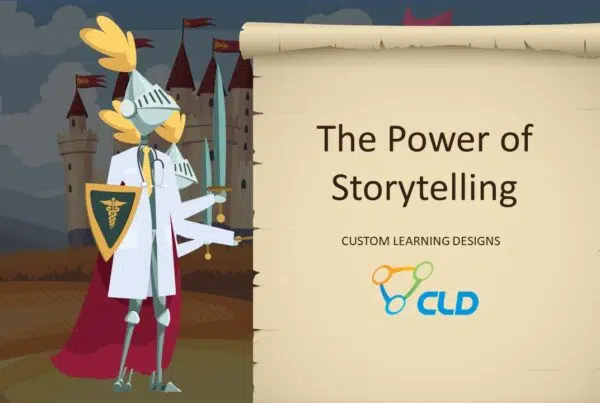The ultimate success of training is the ability of the trainees to apply their skills in the real-life, professional field. It is imperative for a CPR certification course to build on didactic instruction with simulation learning that includes hands-on, application-based training so the trainees gain the skills and confidence required to perform this life-saving procedure in the real-life situation. Similarly, to prepare pharmaceutical sales representatives for the real-life selling scenarios, effective training materials should immerse and engage trainees. The integration of interactivity and the incorporation of active, application-based learning is especially valuable in reinforcing training materials such as virtual classroom trainings, or VCTs. Effective VCTs build on information presented in modules and capture as well as maintain the trainee’s attention by keeping them highly engaged and motivated. Furthermore, to combat the short attention span of the modern learner, trainers need to leverage technology and interactivity to successfully engage and assess the trainees.
How do sales representatives benefit from highly interactive VCTs?
Improved Decision-making
Interactive elements of VCTs, including role-play, teach-backs, and poll questions, provide trainees with opportunities to demonstrate knowledge and skills in an inclusive, risk-free environment. Scenario-based interactivities present the trainees with the opportunity to formulate decisions and practice experiential learning. Ultimately, the insights gained from both successes and failures invariably lead to better decision-making in the sales field.
Reinforcement Through Feedback
Interactivities also require participants to pause, recall and directly apply their knowledge, which not only reinforces essential information, but also highlights any gaps in understanding. The immediate presentation of the correct answer and the feedback provided by the facilitator emphasizes need-to-know information, improves future decisions, and provides a better overall learning experience for the trainees. Simultaneously, interactive software enables trainers to evaluate the performance of individual trainees.
Higher Levels of Engagement
Higher levels of engagement in VCTs immerse trainees into the content and maintain their attention. Participants demonstrate skills, share experiences, and learn from interaction through engaging, thought-provoking, and memorable learning experiences in a collaborative environment.
Improved Retention Rates
For the modern learner who is inundated with information and easily distracted by external stimuli, retention can become a challenge. Studies show that higher levels of engagement during training results in greater retention and recall of knowledge since it transfers information stored in short-term memory to long-term memory. Innovative activities engage trainees and ensure they meet the learning objectives as well as remember the key takeaways.
More Motivated Learners
Examples of real-work scenarios and problem-solving strategies foster internal motivation as application-based training provides context and relevance to their job. The reinforcement of the foundational knowledge and simulation of more real-life experiences in the selling environment motivates sales representatives to become more professional and successful.
Effective and efficient VCTs combine various creative interactive elements with the accountability of the sales representatives to reinforce and retain the information included in the session to prepare them to apply the training to the real-life selling situations.





